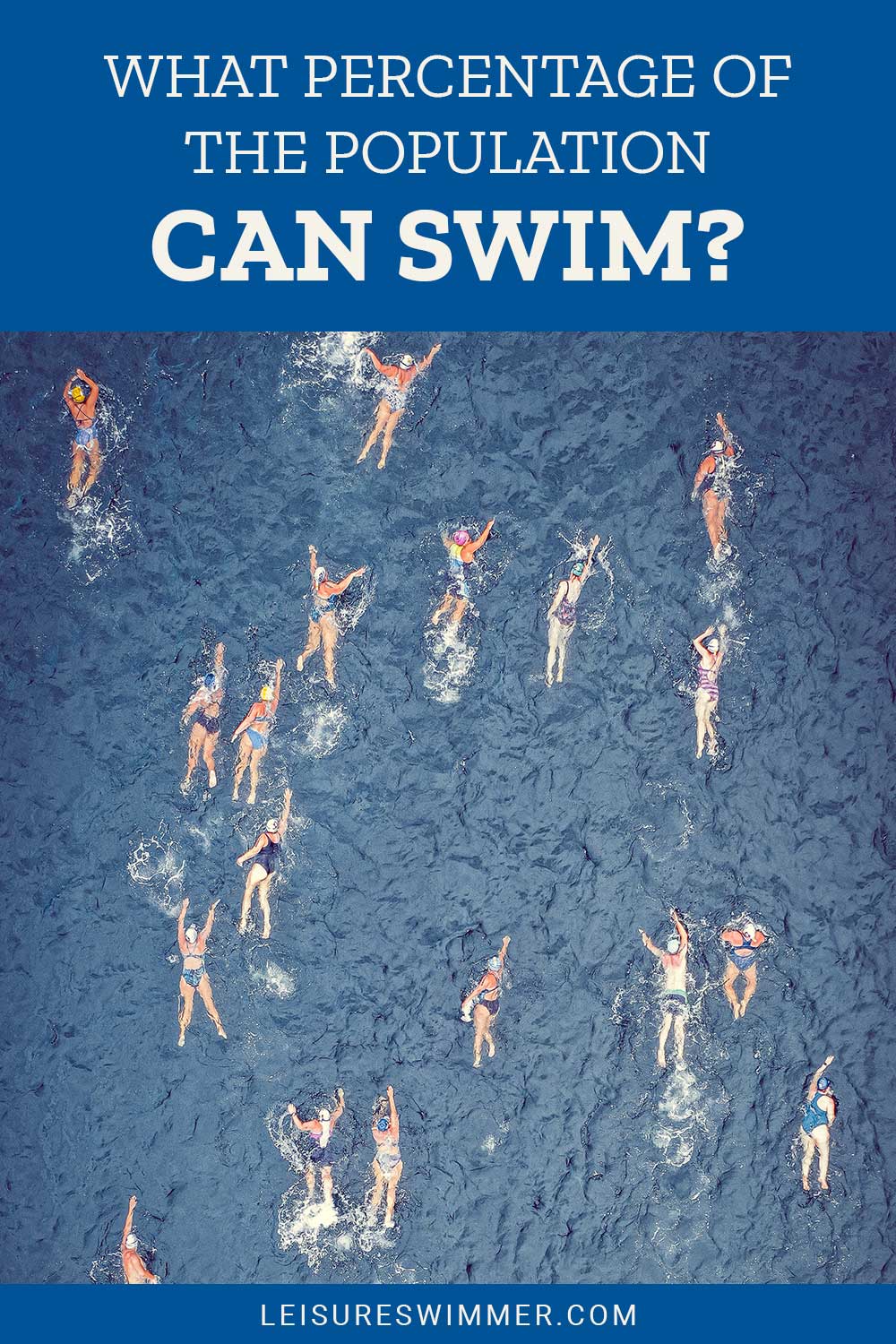What Percentage Of The Population Can Swim?
We may earn commissions for purchases made through links on our site. Learn more on our about us page.
Swimming is not just a way to enjoy yourself at the pool or a great way to exercise, and it is an essential life skill. According to polls from 2019, only 44 percent of the world’s population claims that they can swim.
Eighty percent of Americans report being able to swim, but previous studies have shown that people often overestimate their ability to swim. In reality, only 56 percent of Americans can perform the five basic skills required for safe swimming.
Keep reading to learn more about the demographics and distributions of people who can swim and why swimming is so important.

What Percentage of the Population Can Swim?
Although it is close, studies have shown that most of the global population cannot swim – only 44 percent of the survey, polls, and studies participants can swim safely.
Eighty percent of Americans in the United States claim that they could swim but underperform when tested. Skills that are tested for basic swimming proficiency include:
- Floating or treading water for 60 consecutive seconds
- Jumping or diving into deep water and being able to come up for air
- Rotating 360 degrees in the water before finding a way out of the water
- Getting out of a pool without a ladder
- Swimming a full pool length without stopping to rest
The percentage of Americans who can perform all of the above swimming skills is closer to 56 percent.
The distribution of people who can swim disproportionately favors upper-class populations with high incomes, and over half of the men say they can swim while only a third of women report being able to do the same.

What Continent Has the Highest Percentage of Population that Can Swim?
It is difficult to fully and accurately assess which continents have the highest percentage of the population that can swim for two main reasons:
- It is impossible to survey every single person and verify their claims
- The number of continents and the areas they include varies somewhat
We can consider North America, South America, Europe, Africa, Asia, and Oceania to be the six continents worth surveying (Antarctica is a continent without a significant population).
Of these continents, Oceania has the highest percentage of its population that can swim, between 85 and 90 percent.
Which State in the USA Has the Highest Percentage of People that Can Swim?
You might quickly assume that the West and East coasts of the U.S. are prime candidates for the state with the highest percentage of people that can swim.
Unfortunately, studies that quantify the percentage of people in an American state are a bit dated, with most data coming from 2009 or 2014.
However, based on the number of top “swim cities” in each state and the number of swimming incidents, we can get an idea of which state has the highest percentage of people that can swim.
“Swim cities” are defined by the number of active swimmers, accessible pools, and athlete swimmers in the area. With that in mind, we can identify California and Michigan as two of the top candidates for having the highest percentage of people that can swim.
Keep in mind that these two states are quite different in terms of population size, the size and number of cities in that state, as well as proximity to bodies of water.
Which State in the USA Has the Highest Percentage of People that Can’t Swim?
Using similar metrics to identify the state with the highest percentage of people that can swim, we can figure out which state has the highest percentage of people that cannot swim.
Despite being connected to the Atlantic Ocean, the Gulf of Mexico, or both, Texas and Florida experience some of the highest swimming-related incidents, especially fatal ones.
This could be because many people come from out of state to vacation in these areas and spend time doing water activities and sports when they are unable to swim.
Southern regions, including Texas and Florida, indicate that only 14 percent of people (or children) enroll in private swimming lessons compared to urban areas like New York City or Los Angeles, which can be another explanation.
Why is it Important to Have a High Percentage of the Population that Can Swim?
Swimming is a survival skill, making it important to know even if you don’t live near water or go swimming recreationally.
Drownings rank third on the list of leading causes of unintentional-injury deaths and account for almost a quarter of a million deaths globally each year.
Having a high percentage of the population that is educated and can properly swim will reduce the number of accidents in all water-based activities.
Swimmers can save themselves from most emergencies, identify the signs of drowning, and can save others with the proper training.
Being able to swim may also be increasingly relevant, with water levels rising across the globe due to man-made climate change and the melting of the ice caps.
Final Thoughts on Percentage of Population that Can Swim
The percentage of people who can swim in the U.S. and the world, in general, is shockingly low at just 56 percent and 44 percent, respectively.
This is not necessarily the individual’s fault but a lack of publicly available swimming education or lessons. Areas with a low number of pools can also expect to suffer from a lower percentage of people who can swim.
The income inequality gap and discrimination against minority groups also influence the percentage of demographics that can swim.


